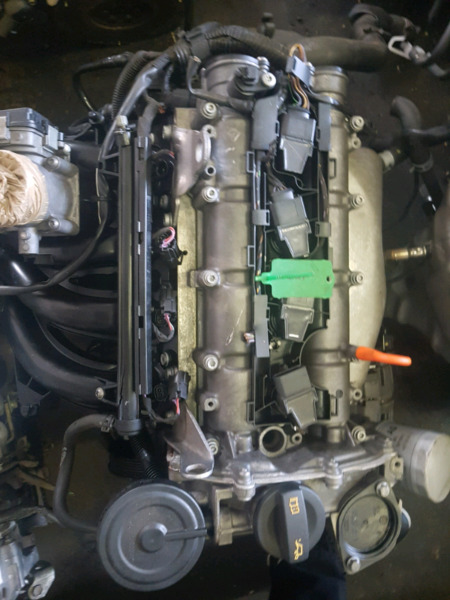Ensure peak performance with a reliable clp engine.
Wiki Article
Just How a Clp Engine Can Boost Performance in Different Industries
The arrival of CLP engines marks a substantial shift in operational performance across various sectors, driven by their ability to optimize fuel intake and reduce downtime. Industries such as manufacturing and logistics stand to get substantially from their durable layout and consistent power output, which promise to enhance operations and improve performance. As organizations progressively prioritize sustainability alongside performance, the role of CLP engines comes to be a lot more vital. What stays to be seen is how these innovations will shape the future landscape of industrial operations and their impact on broader financial patterns (clp engine).Summary of CLP Engines
CLP engines, or Constant Liquid Propellant engines, represent a substantial innovation in propulsion modern technology, specifically for space applications. These engines use a constant feed system that permits the sustained expulsion of propellant, causing improved efficiency and performance compared to traditional strong or hybrid propulsion systems. By maintaining a continuous circulation of fluid propellant, CLP engines can attain extra precise thrust control, which is essential for maneuvering spacecraft in various goal circumstances.The layout of CLP engines incorporates innovative products and ingenious gas management systems. clp engine. This causes decreased weight and increased reliability, essential aspects for long-duration area goals. The continuous procedure reduces the risk of combustion instability, a common obstacle in traditional rocket engines.

Benefits in Manufacturing
The manufacturing of Continuous Liquid Propellant (CLP) engines provides several remarkable advantages that boost both efficiency and cost-effectiveness. Among the key benefits is the structured production process, which lowers the complexity associated with standard propulsion systems. By making use of fluid propellant, producers can achieve better accuracy in engine efficiency, bring about enhanced energy result and decreased waste.Furthermore, CLP engines promote a greater level of modularity, permitting much easier assimilation right into different manufacturing lines. This flexibility can substantially decrease preparations and boost total functional adaptability. The use of CLP modern technology additionally has a tendency to minimize the need for extensive upkeep due to less relocating components, which translates into decreased downtime and functional prices.

Applications in Logistics
Leveraging Constant Liquid Propellant (CLP) engines in logistics offers considerable advantages in functional efficiency and integrity. These engines give a durable solution for various transport demands, enabling the smooth movement of goods across vast ranges. The integral layout of CLP engines permits consistent power outcome, which converts right into smoother and a lot more predictable transportation routines.One of the crucial applications of CLP company website engines in logistics is in sturdy products transportation, where they can drive both ground and airborne automobiles. Their capacity to preserve high efficiency under varying load problems ensures that delivery timelines are fulfilled, therefore enhancing consumer satisfaction. Additionally, CLP engines can be integrated right into automated logistics systems, promoting real-time tracking and optimizing course preparation.
Additionally, the durability of CLP engines reduces maintenance downtime, enabling logistics firms to maximize their operational capacities. This is particularly advantageous in warehousing operations, where effectiveness in managing and delivering goods is important. As logistics continues to evolve, the assimilation of CLP engines stands for a forward-thinking method that not just improves efficiency yet also sustains why not try these out the industry's expanding demands for reliability and rate.
Effect On Energy Effectiveness
Just How do Constant Liquid Propellant (CLP) engines boost energy performance in transport? CLP engines make use of a consistent circulation of fluid fuel, maximizing burning procedures and maintaining a steady drive result. This layout minimizes power losses related to standard combustion engines, where fuel delivery can vary and result in ineffectiveness.The constant procedure of CLP engines permits a much more effective thermal cycle, causing higher certain impulse compared to traditional engines. clp engine. This translates to decreased fuel usage for the same amount of work done, dramatically decreasing operational prices across various transport fields, including aviation and maritime markets
In addition, the capability of CLP engines to keep optimal performance under varying load problems decreases the requirement for frequent acceleration and deceleration, even more enhancing fuel performance. Enhanced power effectiveness not only adds to cost financial savings however also results in decrease greenhouse gas discharges, lining up with worldwide sustainability goals.
Future Trends and Innovations
Emerging advancements in Continual Fluid Propellant (CLP) engine technology assurance to transform the this page landscape of transport efficiency and sustainability. As industries pivot toward greener alternatives, CLP engines stand at the center, incorporating ingenious products and layout methodologies that enhance efficiency while minimizing ecological impact.One of the most promising patterns is the adoption of crossbreed systems that combine CLP engines with renewable resource sources. This harmony can optimize gas consumption and reduce emissions, straightening with worldwide sustainability objectives. Developments in computational liquid dynamics (CFD) are promoting the design of even more aerodynamically reliable engines, leading to reduced drag and improved fuel effectiveness.
Furthermore, the advancement of wise monitoring systems is set to enhance operational performances. These systems leverage information analytics and IoT innovation to enhance engine performance in real-time, making sure that the engines operate within their most reliable specifications.
As research remains to discover different propellant formulas-- such as biofuels and synthetic gas-- the future of CLP engines looks appealing. By harnessing these technologies, industries can not only enhance their performance yet also add considerably to a cleaner, much more lasting future in transportation.
Final Thought
In verdict, CLP engines stand for a significant development in effectiveness throughout several sectors. The integration of advanced products and less moving parts reduces maintenance needs, while positioning with sustainability goals positions CLP engines as a crucial technology for the future.Report this wiki page